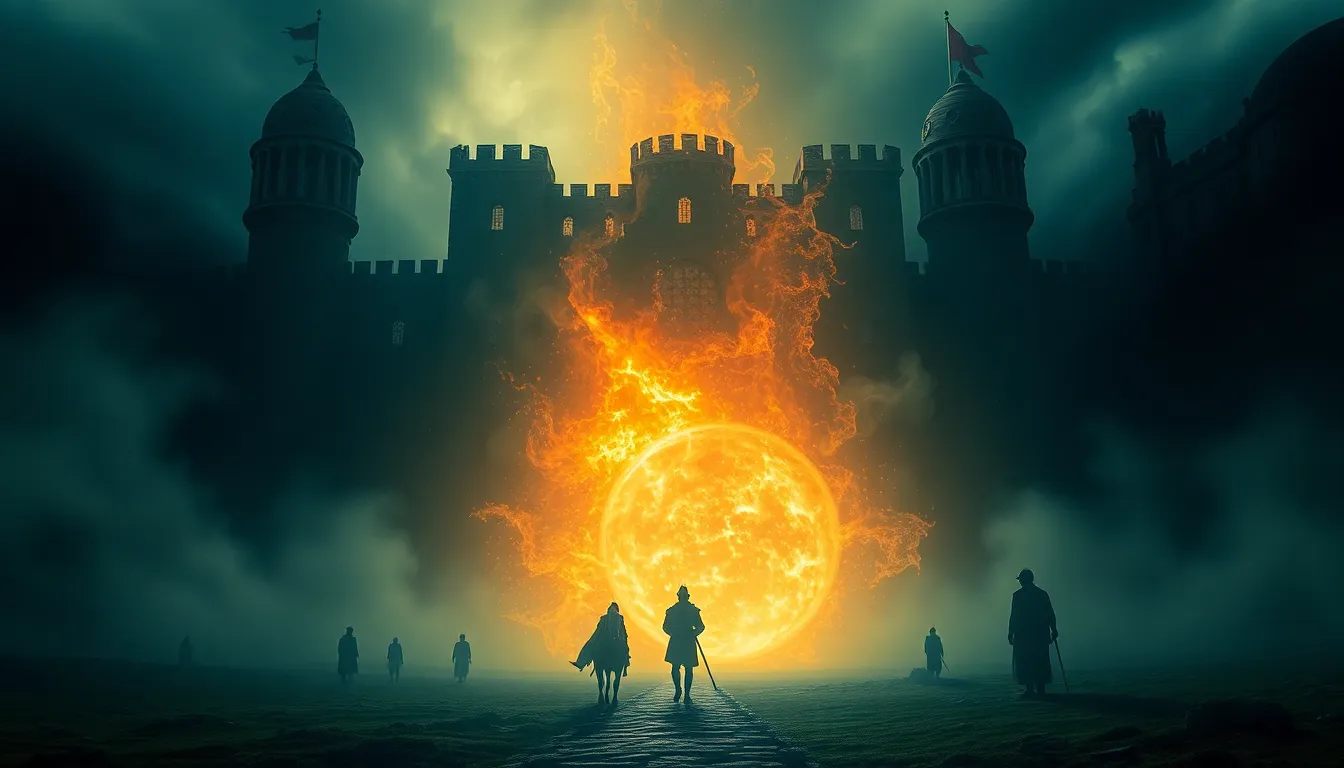The Rise and Fall of Camelot: What Really Happened to King Arthur’s Realm?
1. Introduction: The Legend of Camelot
The tale of King Arthur and his legendary kingdom of Camelot has captivated audiences for centuries. Arthur’s significance in literature and history represents an idealized vision of leadership, justice, and noble governance. The allure of Camelot as a symbol of chivalry and the pursuit of a just society continues to resonate, prompting inquiries into what truly happened to this fabled realm.
2. The Origins of the Arthurian Legend
The roots of the Arthurian legend can be traced back to the historical context of post-Roman Britain, a time marked by chaos and fragmentation following the withdrawal of Roman forces. As various tribes vied for power, stories of a unifying leader emerged. Key sources that shaped the legend include:
- Geoffrey of Monmouth: His work, “Historia Regum Britanniae,” introduced many of the foundational elements of the Arthurian myth.
- Sir Thomas Malory: In “Le Morte d’Arthur,” Malory compiled and expanded the tales of Arthur, solidifying the narrative’s structure for future generations.
The blending of myth and history created a rich tapestry that depicted Camelot as both a real and an idealized place, where valor and virtue reigned supreme.
3. The Establishment of Camelot: A Kingdom of Ideals
Camelot was established as a beacon of hope and unity for the fractured lands of Britain. Its founding symbolized the aspiration for a society governed by justice and equality. Central to this ideal was the Round Table, which represented:
- Equality: Every knight had an equal voice, emphasizing collective decision-making.
- Unity: The Round Table fostered camaraderie and cooperation among the knights.
Key figures in this narrative included:
- Arthur: The charismatic king embodying the ideals of leadership.
- Guinevere: His queen, representing both love and the complexities of human relationships.
- Merlin: The wise wizard, guiding Arthur and providing prophetic insights.
4. The Golden Age of Camelot: Achievements and Triumphs
During its golden age, Camelot was a place of remarkable achievements and triumphs. Major quests, such as the search for the Holy Grail, showcased the bravery and dedication of the Knights of the Round Table. These quests not only tested their valor but also served to:
- Unify the Realm: Camelot became a central force in bringing together diverse factions and tribes.
- Promote Chivalric Codes: The ideals of chivalry permeated society, influencing governance and personal conduct.
The successes of Camelot fostered a sense of hope and inspired future generations to aspire to similar ideals of justice and brotherhood.
5. Internal Conflicts: The Seeds of Discontent
Despite its initial glory, Camelot was not immune to internal strife. Personal conflicts among the Knights of the Round Table began to sow the seeds of discontent. A pivotal element of this discord was the love triangle involving:
- Arthur: The noble king caught in a web of loyalty and betrayal.
- Guinevere: His queen, whose love for Lancelot complicated her relationship with Arthur.
- Lancelot: The greatest knight, whose affair with Guinevere undermined the stability of Camelot.
These betrayals and the ensuing jealousy began to fracture the once-unified kingdom, leading to an atmosphere of mistrust.
6. External Threats: Enemies of the Realm
As internal conflicts grew, external threats loomed large on the horizon. The rise of Mordred, Arthur’s illegitimate son, posed a significant challenge to Arthur’s authority, while invasions from the Saxons, Picts, and other foes tested Camelot’s defenses. Additionally, mystical elements, such as:
- Dark Forces: The influence of sorcery and betrayal from within contributed to the kingdom’s decline.
- Prophecies: Foreboding predictions about Camelot’s fall added to the atmosphere of doom.
These external pressures compounded the turmoil within Camelot, leading to a precarious situation for Arthur and his knights.
7. The Fall of Camelot: Key Events Leading to Destruction
The culmination of internal discord and external threats resulted in the tragic fall of Camelot. Key events leading to this destruction included:
- The Battle of Camlann: The final confrontation where Arthur faced Mordred, resulting in devastating losses.
- Arthur’s Demise: The symbolism of Arthur’s death marked the end of an era and the loss of Camelot’s ideals.
The aftermath of these events left the Knights of the Round Table scattered and disheartened, with many meeting tragic fates as the dream of Camelot faded into myth.
8. The Legacy of Camelot: Myths and Historical Interpretations
The legacy of Camelot endures, influencing culture through the ages. The Arthurian legend has been reinterpreted in various forms, from literature to film, captivating audiences with its timeless themes. Notable aspects of this legacy include:
- Cultural Impact: The tales of King Arthur have inspired countless adaptations in books, movies, and plays.
- Historical Interpretations: Scholars debate the existence of a real King Arthur, with some suggesting he may have been a composite of historical figures.
These interpretations highlight the enduring fascination with Camelot and its representation of ideal governance and heroism.
9. Lessons from the Rise and Fall of Camelot
The saga of Camelot offers profound lessons about leadership, loyalty, and betrayal. Key themes that emerge from its rise and fall include:
- The Importance of Unity: A kingdom’s strength lies in the unity of its leaders and citizens.
- The Dangers of Betrayal: Personal conflicts and betrayals can undermine even the most noble of causes.
- The Impact of Leadership: True leadership requires integrity, wisdom, and the ability to navigate complex relationships.
Ultimately, the story of Camelot serves as a cautionary tale about the complexities of human nature and the fragile nature of idealism.



